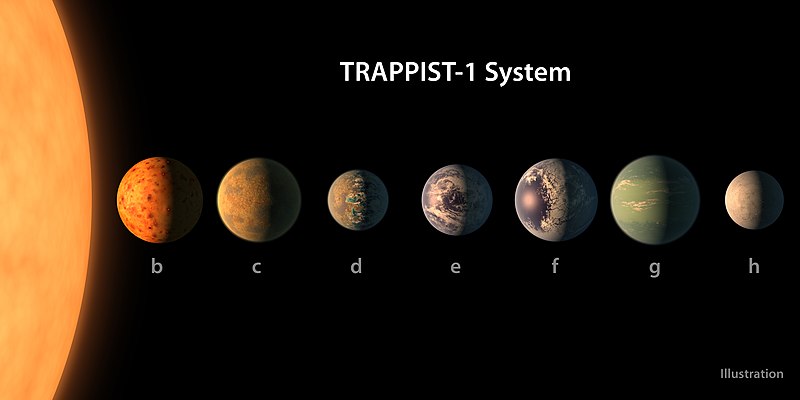فاىل:PIA21422 - TRAPPIST-1 Planet Lineup, Figure 1.jpg

اي پيشأدئنˇ واويراز: ۸۰۰ × ۴۰۰ پيکسل. کیفیتهای دیگر: ۳۲۰ × ۱۶۰ پيکسل | ۶۴۰ × ۳۲۰ پيکسل | ۱٬۰۲۴ × ۵۱۲ پيکسل | ۱٬۲۸۰ × ۶۴۰ پيکسل | ۲٬۵۶۰ × ۱٬۲۸۰ پيکسل | ۶٬۰۰۰ × ۳٬۰۰۰ پيکسل.
أصلˇ فاىل (۶٬۰۰۰ × ۳٬۰۰۰ پیکسل، فاىلˇ واويراز: ۲٫۶۳ مگابایت، نوع MIME فاىل: image/jpeg)
فاىلˇ تاريخ
تاريخ/زمتؤنˇ سر کيليک بکۊنين تا اۊ تاريخ/زمتˇ نۊسخه' بىنين.
| تاريخ/زمت | کلˇ أنگۊشتي | أبعاد | کارگير | نظر | |
|---|---|---|---|---|---|
| ألؤنˇ نۊسخه | ۲۲ فئوريه ۲۰۱۷، ساعت ۱۸:۳۹ |  | ۶٬۰۰۰ در ۳٬۰۰۰ (۲٫۶۳ مگابایت) | PhilipTerryGraham | User created page with UploadWizard |
فاىله کارأىتن
اي ولگ اي تاتاىئه خال بدأ دأنه:
فاىلˇ سراسري کارأىتن
اي ويکئن اي فاىله کارأىته دأنن:
- af.wikipedia.org مئن کارأىتن
- ar.wikipedia.org مئن کارأىتن
- bn.wikipedia.org مئن کارأىتن
- ca.wikipedia.org مئن کارأىتن
- el.wikipedia.org مئن کارأىتن
- en.wikipedia.org مئن کارأىتن
- es.wikipedia.org مئن کارأىتن
- et.wikipedia.org مئن کارأىتن
- fi.wikipedia.org مئن کارأىتن
- fi.wikibooks.org مئن کارأىتن
- id.wikipedia.org مئن کارأىتن
- ja.wikipedia.org مئن کارأىتن
- ku.wikipedia.org مئن کارأىتن
- lt.wikipedia.org مئن کارأىتن
- ms.wikipedia.org مئن کارأىتن
- my.wikipedia.org مئن کارأىتن
- nl.wikipedia.org مئن کارأىتن
- pnb.wikipedia.org مئن کارأىتن
- pt.wikipedia.org مئن کارأىتن
- ro.wikipedia.org مئن کارأىتن
- tl.wikipedia.org مئن کارأىتن
- tr.wikipedia.org مئن کارأىتن
- uk.wikipedia.org مئن کارأىتن
- ur.wikipedia.org مئن کارأىتن
- vi.wikipedia.org مئن کارأىتن



